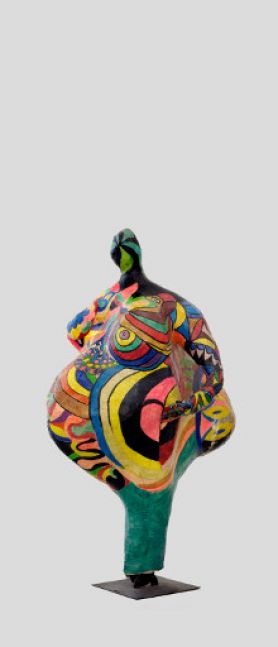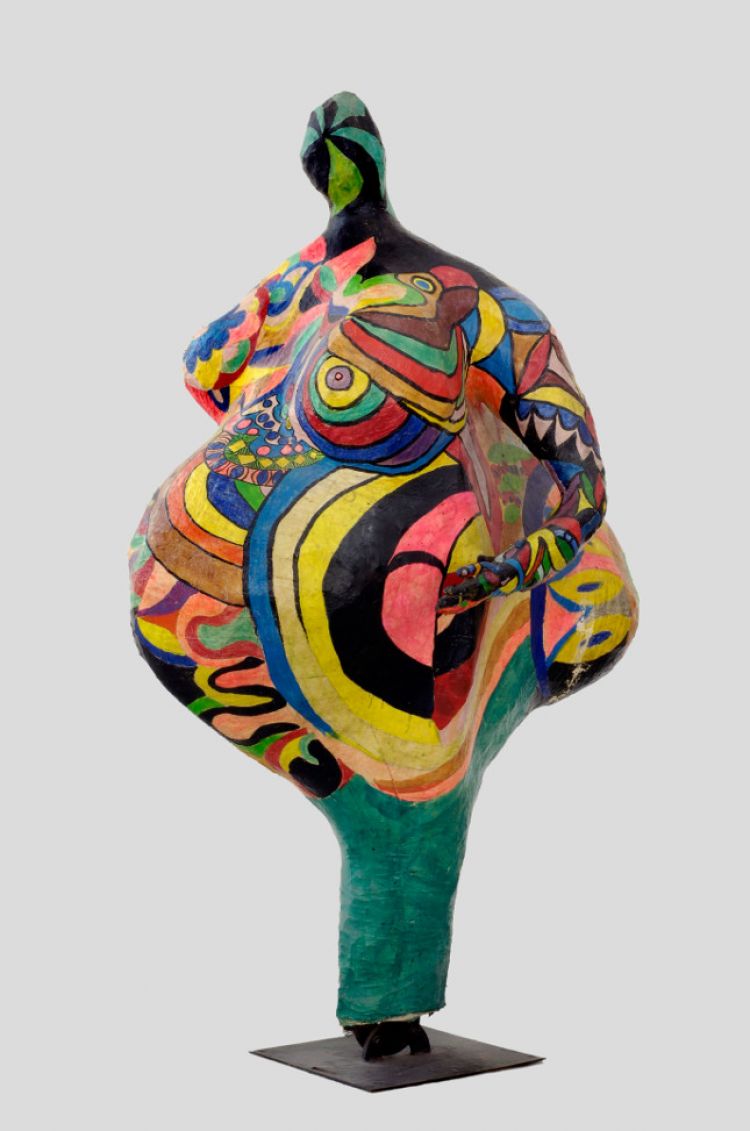Elisabeth (Nana)

Coming from the upper middle class, Niki de Saint Phalle experienced a strict education provided by American Catholic schools. Literature and then the visual arts put her on the road to emancipation. Traumatic personal experiences led her to express a violence directed against her own image or solicited from the spectator. Her shooting paintings were ritual performances in which passers-by were invited to fire rifles at composite paintings. It was during this period that she became an important figure in New Realism.
With the "Nanas", a series of imposing sculptures of opulent and misshapen women, mounted on metal frames, their skin being made of variegated papier-mâché, the artist celebrates "the dawning of a new matriarchal society". The first female effigies exhibited in Paris in 1965 evoked the "Venus" figures of the Palaeolithic Age. Hon, a monument-symbol produced with Jean Tinguely and Per Olof Ultveldt at the Moderna Museet in Stockholm in 1966, is a sculpture of a giant woman which visitors can visit from the inside. Elisabeth is endowed with the usual attributes of femininity, but deprived of arms and with an atrophied head. Whether expressing the dull violence of a battered body or the primacy of sensitivity and sexuality involving colour and voluptuous forms, this woman is the embodiment of vital energy while at the same time leaving room for ambiguity.
